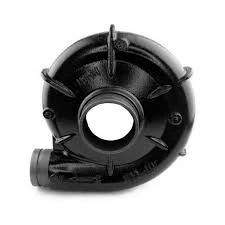Mobile:+86-311-808-126-83
Email:info@ydcastings.com
German
Low Temperature Metal Casting Techniques and Innovations for Enhanced Durability and Performance
Low-Temperature Metal Casting Innovations and Applications
Metal casting is a fundamental manufacturing process that converts molten metal into desired shapes. As industries evolve, there is a growing interest in specialized casting techniques that allow for the manipulation of metals at lower temperatures. Low-temperature metal casting, particularly with non-ferrous metals such as aluminum, zinc, and lead, has gained traction due to its unique advantages, including energy efficiency, reduced thermal stress, and improved safety.
The Science Behind Low-Temperature Casting
Low-temperature metal casting techniques typically involve casting temperatures below 400 degrees Celsius (752 degrees Fahrenheit). This range is considerably lower than traditional casting methods, which can require temperatures exceeding 700 degrees Celsius (1,292 degrees Fahrenheit). The metals commonly used in low-temperature casting include aluminum alloys, which can be melted at approximately 660 degrees Celsius (1,220 degrees Fahrenheit), and zinc alloys, which melt at around 420 degrees Celsius (788 degrees Fahrenheit). By utilizing these alloys, manufacturers can significantly reduce the energy consumption associated with the melting process.
Energy Efficiency and Environmental Benefits
One of the primary motivations for adopting low-temperature metal casting methods is the associated energy savings. Lower melting temperatures mean that less energy is required to heat the furnaces and keep the metal molten. This reduction in energy consumption not only lowers production costs but also minimizes the overall carbon footprint of the casting operation. With increasing global emphasis on sustainability and environmentally friendly manufacturing practices, low-temperature metal casting presents a viable alternative to traditional techniques.
Additionally, the reduced thermal energy involved in low-temperature casting leads to lower levels of harmful emissions, making it a cleaner process. Since fewer toxins are released during melting, there is a significant decrease in air pollution and health hazards for workers and surrounding communities.
Improved Material Properties
Casting metals at lower temperatures can also enhance the mechanical properties of the finished products. Traditional high-temperature casting methods can introduce defects such as shrinkage, porosity, and thermal stress, which may compromise the integrity of the components. In contrast, low-temperature casting tends to promote denser and more homogeneous microstructures.
low temp metal casting

The favorable cooling rates associated with low-temperature processing can lead to finer grain structures, which generally yield enhanced strength, toughness, and fatigue resistance. As a result, products manufactured using these methods can perform better under stress and are less likely to fail during usage.
Applications in Modern Industries
The potential applications for low-temperature metal casting are extensive and span various sectors, including automotive, aerospace, electronics, and art. In the automotive industry, for instance, manufacturers are exploring low-temperature casting techniques to produce lightweight and fuel-efficient components. Low-density aluminum and zinc parts can significantly improve vehicle performance while adhering to increasingly stringent emissions regulations.
In aerospace, where safety and weight are critical factors, low-temperature casting techniques are being utilized to create precision components that require minimal machining afterward. The electronics industry also benefits from these methods, as low-temperature casting can be used to produce intricate housings and fixtures that require excellent thermal and electrical conductivities.
Furthermore, artists and craftspeople are embracing low-temperature metal casting to create unique sculptures and decorative pieces. The ability to melt and pour metals like aluminum and zinc without extensive equipment makes it accessible for creative expression.
Future Outlook
As technology advances, the future of low-temperature metal casting looks promising. Continued research and development in material science and process engineering are expected to yield even more efficient methods and enhanced material properties. The drive towards sustainable production will likely encourage more companies to adopt low-temperature casting techniques as a means to align their practices with environmental goals.
In conclusion, low-temperature metal casting offers a range of benefits from energy efficiency to improved material properties, making it an appealing alternative to traditional casting methods. As industries continue to evolve and prioritize sustainability, low-temperature casting is poised to play a vital role in the manufacturing landscape of the future.











